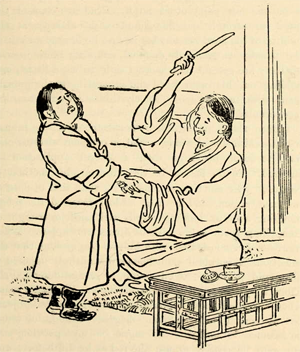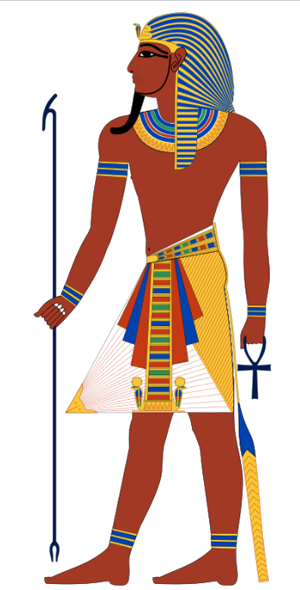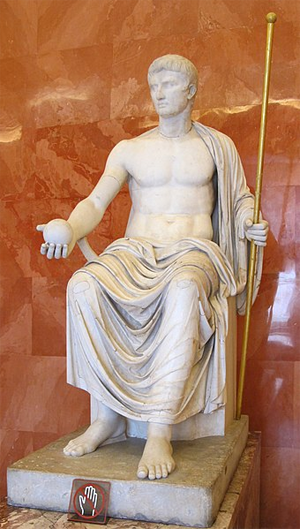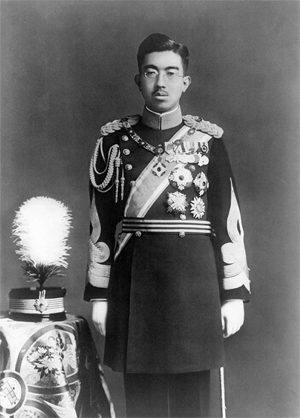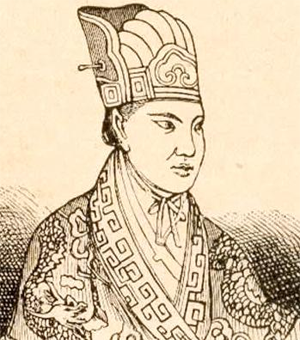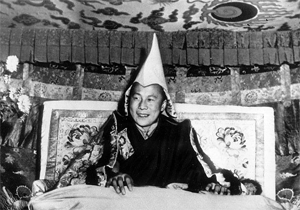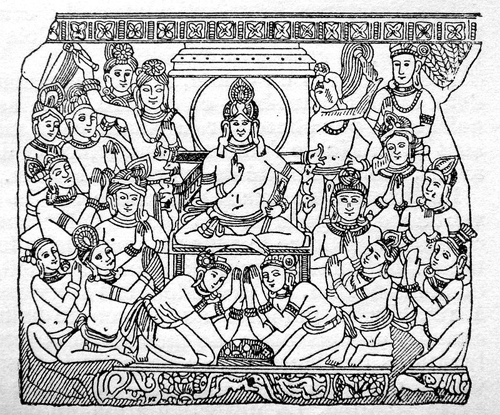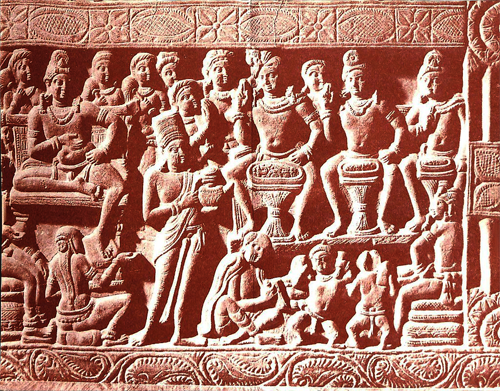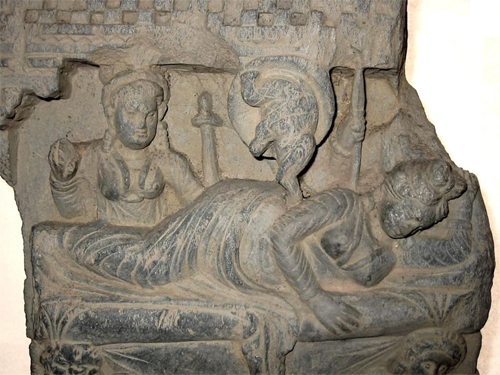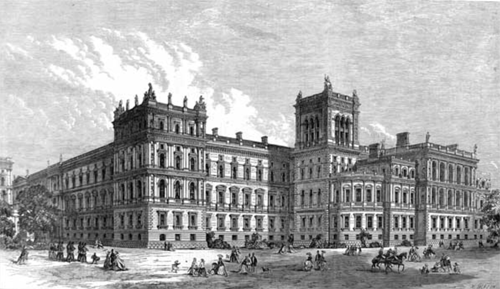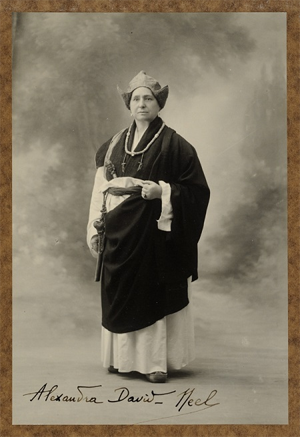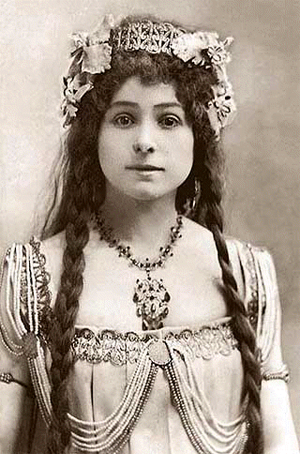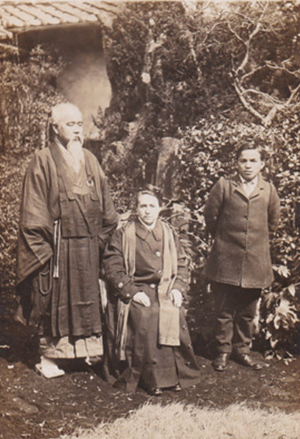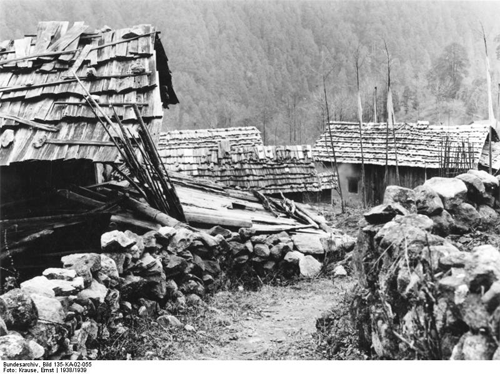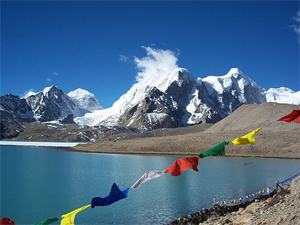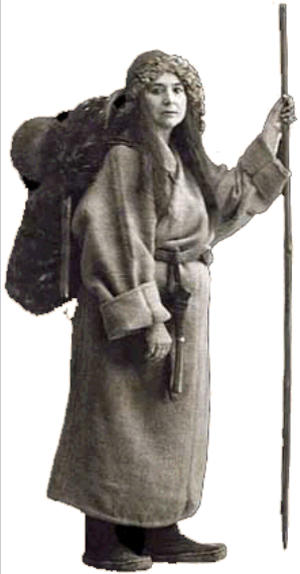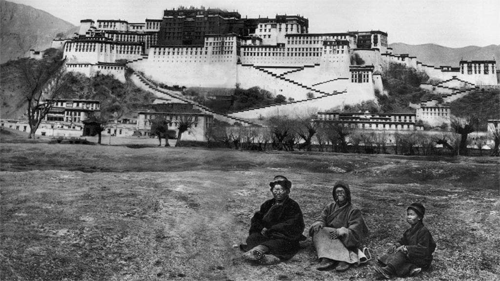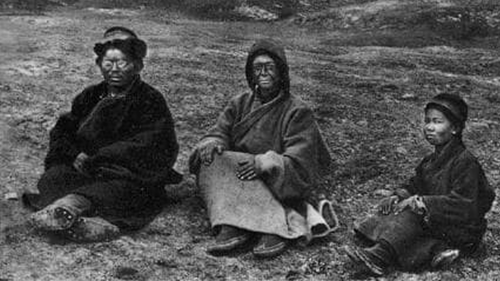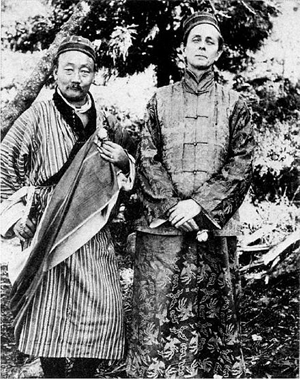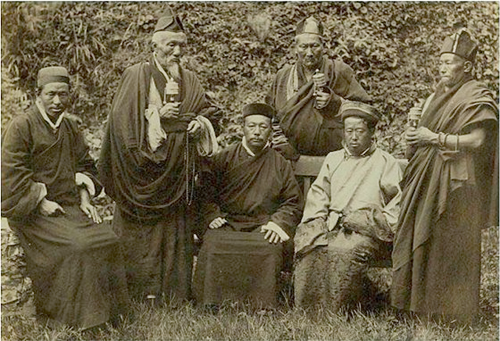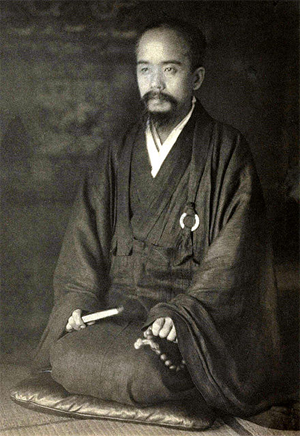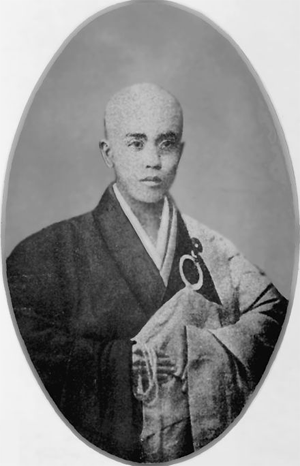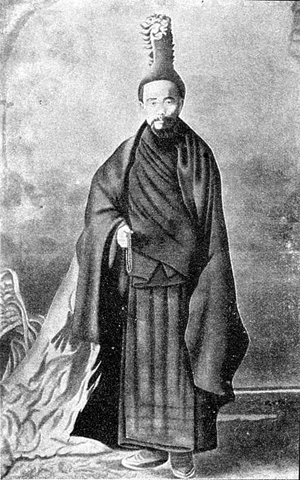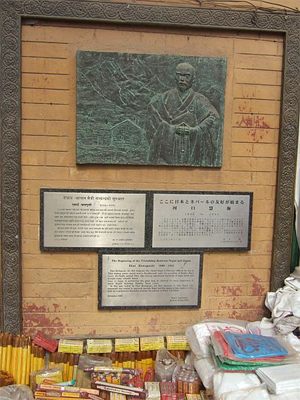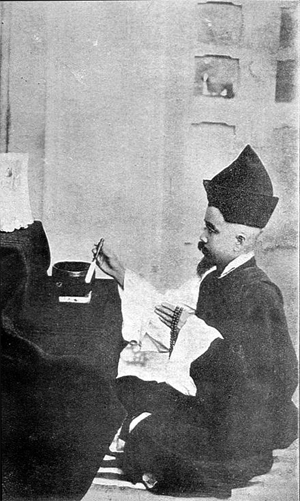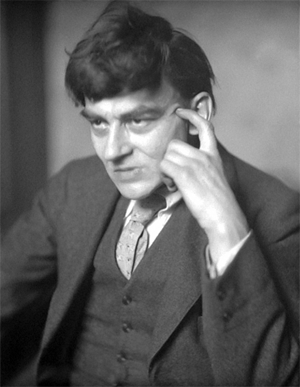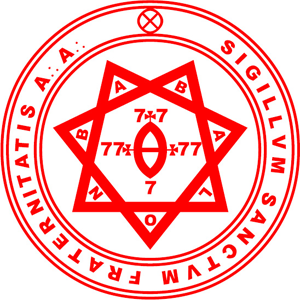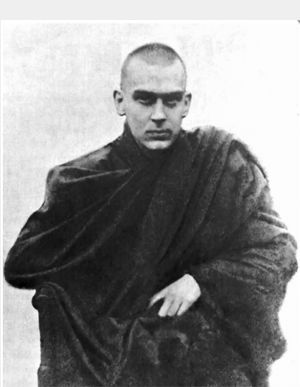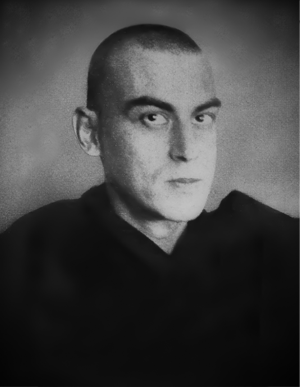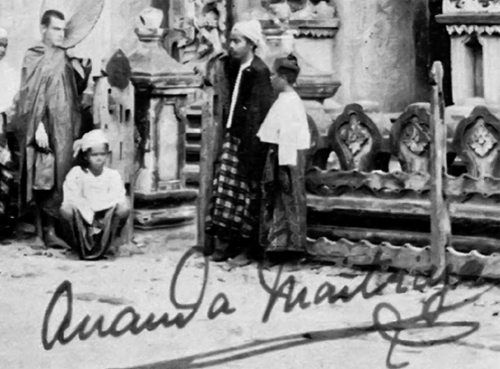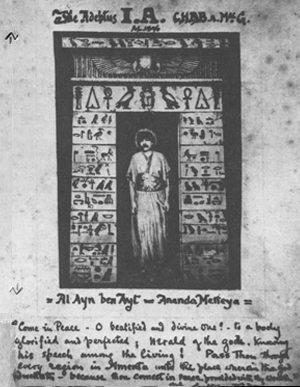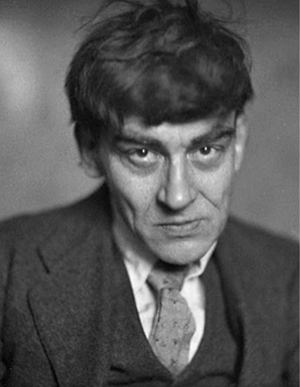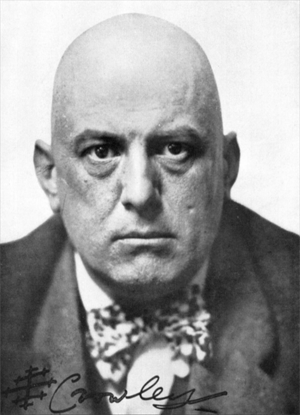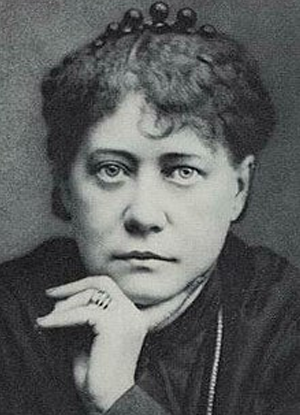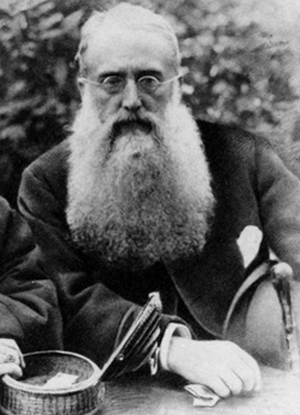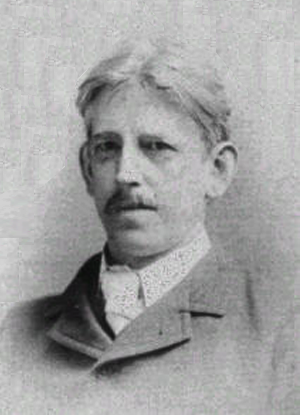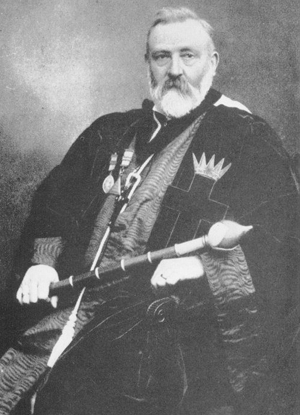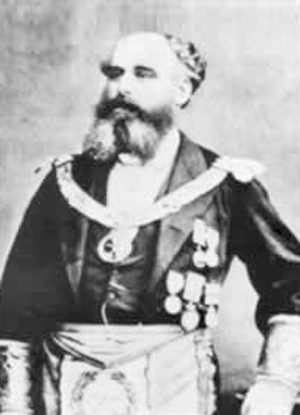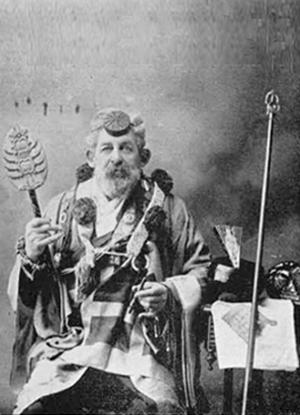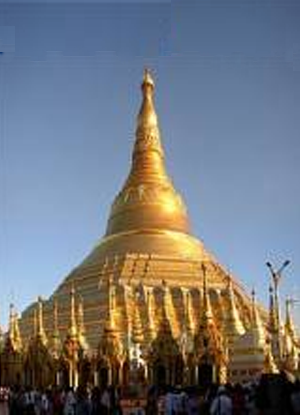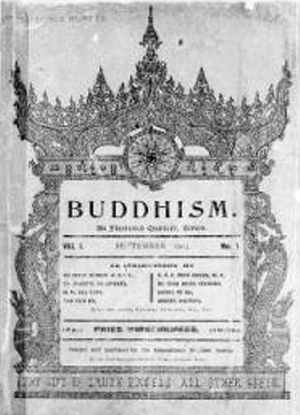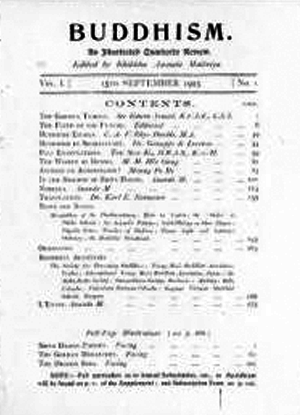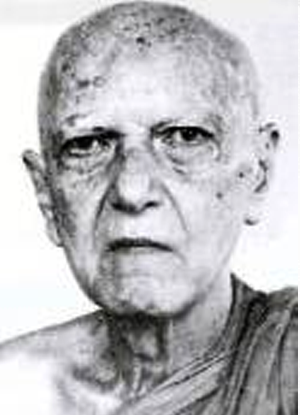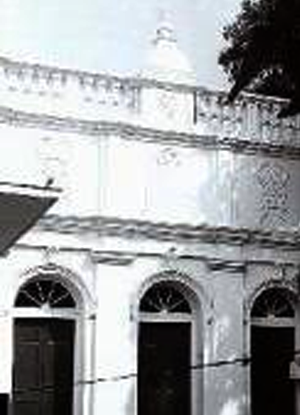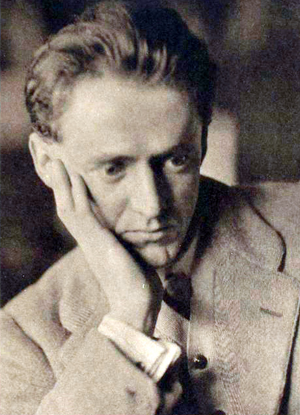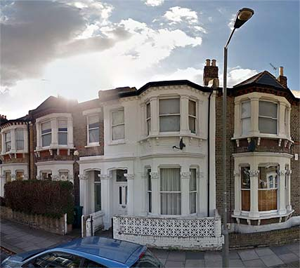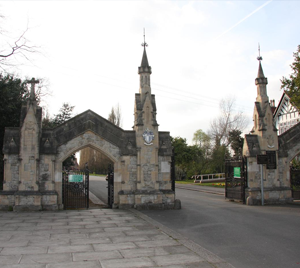Re: Freda Bedi, by Wikipedia
The Declaration of Independence
The Unanimous Declaration of the Thirteen United States of America
In Congress
July 4, 1776
When in the Course of human events it becomes necessary for one people to dissolve the political bands which have connected them with another and to assume among the powers of the earth, the separate and equal station to which the Laws of Nature and of Nature's God entitle them, a decent respect to the opinions of mankind requires that they should declare the causes which impel them to the separation.
We hold these truths to be self-evident, that all men are created equal, that they are endowed by their Creator with certain unalienable Rights, that among these are Life, Liberty and the pursuit of Happiness. — That to secure these rights, Governments are instituted among Men, deriving their just powers from the consent of the governed, — That whenever any Form of Government becomes destructive of these ends, it is the Right of the People to alter or to abolish it, and to institute new Government, laying its foundation on such principles and organizing its powers in such form, as to them shall seem most likely to effect their Safety and Happiness. Prudence, indeed, will dictate that Governments long established should not be changed for light and transient causes; and accordingly all experience hath shewn that mankind are more disposed to suffer, while evils are sufferable than to right themselves by abolishing the forms to which they are accustomed. But when a long train of abuses and usurpations, pursuing invariably the same Object evinces a design to reduce them under absolute Despotism, it is their right, it is their duty, to throw off such Government, and to provide new Guards for their future security.
— Such has been the patient sufferance of these Colonies; and such is now the necessity which constrains them to alter their former Systems of Government. The history of the present King of Great Britain is a history of repeated injuries and usurpations, all having in direct object the establishment of an absolute Tyranny over these States.
To prove this, let Facts be submitted to a candid world.
He has refused his Assent to Laws, the most wholesome and necessary for the public good.
He has forbidden his Governors to pass Laws of immediate and pressing importance, unless suspended in their operation till his Assent should be obtained; and when so suspended, he has utterly neglected to attend to them.
He has refused to pass other Laws for the accommodation of large districts of people, unless those people would relinquish the right of Representation in the Legislature, a right inestimable to them and formidable to tyrants only.
He has called together legislative bodies at places unusual, uncomfortable, and distant from the depository of their Public Records, for the sole purpose of fatiguing them into compliance with his measures.
He has dissolved Representative Houses repeatedly, for opposing with manly firmness his invasions on the rights of the people.
He has refused for a long time, after such dissolutions, to cause others to be elected, whereby the Legislative Powers, incapable of Annihilation, have returned to the People at large for their exercise; the State remaining in the mean time exposed to all the dangers of invasion from without, and convulsions within.
He has endeavoured to prevent the population of these States; for that purpose obstructing the Laws for Naturalization of Foreigners; refusing to pass others to encourage their migrations hither, and raising the conditions of new Appropriations of Lands.
He has obstructed the Administration of Justice by refusing his Assent to Laws for establishing Judiciary Powers.
He has made Judges dependent on his Will alone for the tenure of their offices, and the amount and payment of their salaries.
He has erected a multitude of New Offices, and sent hither swarms of Officers to harass our people and eat out their substance.
He has kept among us, in times of peace, Standing Armies without the Consent of our legislatures.
He has affected to render the Military independent of and superior to the Civil Power.
He has combined with others to subject us to a jurisdiction foreign to our constitution, and unacknowledged by our laws; giving his Assent to their Acts of pretended Legislation:
For quartering large bodies of armed troops among us:
For protecting them, by a mock Trial from punishment for any Murders which they should commit on the Inhabitants of these States:
For cutting off our Trade with all parts of the world:
For imposing Taxes on us without our Consent:
For depriving us in many cases, of the benefit of Trial by Jury:
For transporting us beyond Seas to be tried for pretended offences:
For abolishing the free System of English Laws in a neighbouring Province, establishing therein an Arbitrary government, and enlarging its Boundaries so as to render it at once an example and fit instrument for introducing the same absolute rule into these Colonies
For taking away our Charters, abolishing our most valuable Laws and altering fundamentally the Forms of our Governments:
For suspending our own Legislatures, and declaring themselves invested with power to legislate for us in all cases whatsoever.
He has abdicated Government here, by declaring us out of his Protection and waging War against us.
He has plundered our seas, ravaged our coasts, burnt our towns, and destroyed the lives of our people.
He is at this time transporting large Armies of foreign Mercenaries to compleat the works of death, desolation, and tyranny, already begun with circumstances of Cruelty & Perfidy scarcely paralleled in the most barbarous ages, and totally unworthy the Head of a civilized nation.
He has constrained our fellow Citizens taken Captive on the high Seas to bear Arms against their Country, to become the executioners of their friends and Brethren, or to fall themselves by their Hands.
He has excited domestic insurrections amongst us, and has endeavoured to bring on the inhabitants of our frontiers, the merciless Indian Savages whose known rule of warfare, is an undistinguished destruction of all ages, sexes and conditions.
In every stage of these Oppressions We have Petitioned for Redress in the most humble terms: Our repeated Petitions have been answered only by repeated injury. A Prince, whose character is thus marked by every act which may define a Tyrant, is unfit to be the ruler of a free people.
Nor have We been wanting in attentions to our British brethren. We have warned them from time to time of attempts by their legislature to extend an unwarrantable jurisdiction over us. We have reminded them of the circumstances of our emigration and settlement here. We have appealed to their native justice and magnanimity, and we have conjured them by the ties of our common kindred to disavow these usurpations, which would inevitably interrupt our connections and correspondence. They too have been deaf to the voice of justice and of consanguinity. We must, therefore, acquiesce in the necessity, which denounces our Separation, and hold them, as we hold the rest of mankind, Enemies in War, in Peace Friends.
We, therefore, the Representatives of the united States of America, in General Congress, Assembled, appealing to the Supreme Judge of the world for the rectitude of our intentions, do, in the Name, and by Authority of the good People of these Colonies, solemnly publish and declare, That these united Colonies are, and of Right ought to be Free and Independent States, that they are Absolved from all Allegiance to the British Crown, and that all political connection between them and the State of Great Britain, is and ought to be totally dissolved; and that as Free and Independent States, they have full Power to levy War, conclude Peace, contract Alliances, establish Commerce, and to do all other Acts and Things which Independent States may of right do. — And for the support of this Declaration, with a firm reliance on the protection of Divine Providence, we mutually pledge to each other our Lives, our Fortunes, and our sacred Honor.
New Hampshire:
Josiah Bartlett, William Whipple, Matthew Thornton
Massachusetts:
John Hancock, Samuel Adams, John Adams, Robert Treat Paine, Elbridge Gerry
Rhode Island:
Stephen Hopkins, William Ellery
Connecticut:
Roger Sherman, Samuel Huntington, William Williams, Oliver Wolcott
New York:
William Floyd, Philip Livingston, Francis Lewis, Lewis Morris
New Jersey:
Richard Stockton, John Witherspoon, Francis Hopkinson, John Hart, Abraham Clark
Pennsylvania:
Robert Morris, Benjamin Rush, Benjamin Franklin, John Morton, George Clymer, James Smith, George Taylor, James Wilson, George Ross
Delaware:
Caesar Rodney, George Read, Thomas McKean
Maryland:
Samuel Chase, William Paca, Thomas Stone, Charles Carroll of Carrollton
Virginia:
George Wythe, Richard Henry Lee, Thomas Jefferson, Benjamin Harrison, Thomas Nelson, Jr., Francis Lightfoot Lee, Carter Braxton
North Carolina:
William Hooper, Joseph Hewes, John Penn
South Carolina:
Edward Rutledge, Thomas Heyward, Jr., Thomas Lynch, Jr., Arthur Middleton
Georgia:
Button Gwinnett, Lyman Hall, George Walton
The Unanimous Declaration of the Thirteen United States of America
In Congress
July 4, 1776
When in the Course of human events it becomes necessary for one people to dissolve the political bands which have connected them with another and to assume among the powers of the earth, the separate and equal station to which the Laws of Nature and of Nature's God entitle them, a decent respect to the opinions of mankind requires that they should declare the causes which impel them to the separation.
We hold these truths to be self-evident, that all men are created equal, that they are endowed by their Creator with certain unalienable Rights, that among these are Life, Liberty and the pursuit of Happiness. — That to secure these rights, Governments are instituted among Men, deriving their just powers from the consent of the governed, — That whenever any Form of Government becomes destructive of these ends, it is the Right of the People to alter or to abolish it, and to institute new Government, laying its foundation on such principles and organizing its powers in such form, as to them shall seem most likely to effect their Safety and Happiness. Prudence, indeed, will dictate that Governments long established should not be changed for light and transient causes; and accordingly all experience hath shewn that mankind are more disposed to suffer, while evils are sufferable than to right themselves by abolishing the forms to which they are accustomed. But when a long train of abuses and usurpations, pursuing invariably the same Object evinces a design to reduce them under absolute Despotism, it is their right, it is their duty, to throw off such Government, and to provide new Guards for their future security.
Except for special persons, the administrators of monasteries are forbidden to trade, loan money, deal in any kind of livestock, and/or subjugate another’s subjects....
The Tibetan government’s civil and military officials, when collecting taxes or dealing with their subject citizens, should carry out their duties with fair and honest judgment so as to benefit the government without hurting the interests of the subject citizens. Some of the central government officials posted at Ngari Korsum in western Tibet, and Do Kham in eastern Tibet, are coercing their subject citizens to purchase commercial goods at high prices and have imposed transportation rights exceeding the limit permitted by the government. Houses, properties and lands belonging to subject citizens have been confiscated on the pretext of minor breaches of the law. Furthermore, the amputation of citizens’ limbs has been carried out as a form of punishment. Henceforth, such severe punishments are forbidden....
Tibet, although thinly populated, is an extensive country. Some local officials and landholders are jealously obstructing other people from developing vacant lands, even though they are not doing so themselves. People with such intentions are enemies of the State and our progress. From now on, no one is allowed to obstruct anyone else from cultivating whatever vacant lands are available. Land taxes will not be collected until three years have passed; after that the land cultivator will have to pay taxes to the government and to the landlord every year, proportionate to the rent. The land will belong to the cultivator.
-- The 13th Dalai Lama's Declaration of Independence From the Tyranny of Tibet
— Such has been the patient sufferance of these Colonies; and such is now the necessity which constrains them to alter their former Systems of Government. The history of the present King of Great Britain is a history of repeated injuries and usurpations, all having in direct object the establishment of an absolute Tyranny over these States.
I, the Dalai Lama, most omniscient possessor of the Buddhist faith, whose title was conferred by the Lord Buddha’s command from the glorious land of India, speak to you as follows:
I am speaking to all classes of Tibetan people. Lord Buddha, from the glorious country of India, prophesied that the reincarnations of Avalokitesvara, through successive rulers from the early religious kings to the present day, would look after the welfare of Tibet....
Peace and happiness in this world can only be maintained by preserving the faith of Buddhism....
Buddhism should be taught, learned, and meditated upon properly....
We are a small, religious, and independent nation.... To safeguard and maintain the independence of our country, one and all should voluntarily work hard....
Your duties to the government and to the people will have been achieved when you have executed all that I have said here. This letter must be posted and proclaimed in every district of Tibet, and a copy kept in the records of the offices in every district.
-- Proclamation Issued by H. H. The Dalai Lama XIII
To prove this, let Facts be submitted to a candid world.
He has refused his Assent to Laws, the most wholesome and necessary for the public good.
Education is not widely diffused in Tibet. In the neighborhood of Shigatze children are taught comparatively well the three subjects of writing, arithmetic and reading, but in other places no provision exists for teaching children, except at monasteries, so that the boys and girls of ordinary people are generally left uneducated, especially the latter.
As might naturally be expected, educational establishments are few and far between. The only institutions worthy of the name are found on the premises of the Palace at Lhasa, and of the Tashi Lhunpo monasteries in Shigatze; all the rest are only ‘family schools’.
From the important position which priests command in Tibet, the system of training them is pretty well developed, and it is only at religious schools that one can obtain even a comparatively advanced education. Sons of ordinary people can enjoy the benefit of that education only by joining the order, for otherwise they are refused admission to Government schools.
The doors of those schools are, of course, shut against boys of humble origin. In Tibet there exists one class which is the lowest in the scale of social gradation. This lowest grade is subdivided into fishermen, ferry-men, smiths, and butchers. Smiths are relegated to this grade in Tibet just as in India, and for the same reason—that they pursue an objectionable occupation in making edged tools used for slaughtering living things, the most sinful occupation of all. People of this lowest grade are even prohibited from becoming priests, and if ever they enter the privileged order it is by some surreptitious means and by concealing[436] their real rank. In this way some men of the lowest origin have become priests at places remote from their native villages. Compared with these despised classes, the ordinary people may be said to enjoy a great advantage.
The classes who are entitled to enter the Government institutions are only four:
1. Ger-pa, Peers; 2. Ngak-pa, the manṭra clan, 3. Bon-bo, the Old Sect clan; 4. Shal-ngo, families of former chieftains...
As I have mentioned before, lads belonging to the higher ranks are entitled to enter Government schools, but the subjects taught there are at best imperfect. The lessons consist only of learning by memory, penmanship and counting. The first subject is the most important, next comes penmanship, the latter receiving even a larger allotment of hours than the other. Counting is a primitive affair, being taught by means of pebbles, pieces of wood, or shells. The subject matters of learning by memory are Buddhist Texts, the elements of grammar, and lastly rhetoric. This last is a subject of great ambition for Tibetan scholars, who are just like Chinese in their fondness for grandiloquent expressions. Documents to be presented to the Dalai Lama and other high personages bristle with high-flown phraseology and with characters rarely used in ordinary writing, and not found even in Buddhist Texts. The fact is that Tibetan scholars at present hold strange ideas about writing, being of opinion that they should aim at composing in a style unintelligible to ordinary persons. The more characters they can use which cannot easily be understood by others, the better proof, they think, have they given of the profundity of their scholarship. The most scholarly compositions are practically hierographic so far as their incomprehensibility is concerned.
FLOGGING AS A MEANS OF EDUCATION
The birch-rod is considered to be the most useful implement in teaching; not exactly a birch-rod, however, but a flat piece of bamboo. The cramming of difficult passages of rhetoric being the principal mode of learning imposed on pupils, their masters are invariably of opinion that they must make free use of the rod in order to quicken their pupils’[444] progress. The relation between masters and pupils does not differ much from that between gaolers and convicts. The latter, poor fellows, hold their masters in such dread that they find it exceedingly trying, at the sight of them and their formidable pedagogic weapons, to compose their minds and to go on unfalteringly with their lessons. They cower with fear, and are filled with the perturbing thought that the rod is sure to descend upon them for the slightest stumble they make in the path of learning. The ordinary way of using the rod is to give thirty blows with it on the left palm of the pupil. Prudence counsels the pupil to stretch out his hand with alacrity at the bidding of his hard master, for in case he hesitates to do so the penalty is generally doubled, and sixty blows instead of thirty are given. It is a cruel sight to see a little pupil holding out his open hand and submitting to the punishment with tearful eyes. Surely this is not education but mere cruelty...
Abuse is also considered as an efficient means of educating boys. “Beast,” “beggar,” “devil,” “ass,” “eater of parents’ flesh,” are epithets applied to backward boys by their teachers, and this custom of using foul language is naturally handed on from teachers to pupils, who when they grow up are sure to pass on those slanderous appellations to the next generation.
While the education of the sons of laymen is conducted with such severity, that of boy disciples by Lama priests is extremely lenient, and is quite in contrast to that of the others. The disciples are not even reprimanded, much less chastised, when they neglect their work. The priests generally leave them to do as they like, much as uxorious husbands do towards their wilful wives, so that it is no wonder that the disciples of Lamas very seldom make any good progress in learning. They are spoiled by the excessive indulgence of their masters. Some of these masters own the evil of their way of education, and are careful not to spoil the youthful pupils placed under their care, and it is precisely from among these latter disciples that priests of learning and ability may be expected.
The memorising part of the Tibetan system of education, as mentioned above, is a heavy burden on the pupils. To give some idea of what an important part this work occupies in their system, I may note that a young acolyte, who has grown to fifteen or sixteen years old, has to commit to memory, from the oral instruction of his teachers, from three hundred to five hundred pages of Buḍḍhist texts in the course of a year. He has then to undergo an examination on what he has learned. Even for a lad of weak memory, the number of pages is not less than one hundred in a year. For those who have grown older, that is for those whose age ranges between eighteen and thirty, the task imposed is still more formidable, being five to eight hundred and even one thousand pages. I was amazed at this mental feat of the Tibetan priests, for I could barely learn fifty sheets in six months, that being the minimum limit allotted for aspirants of poor memory.
-- Three Years in Tibet, by Shramana Ekai Kawaguchi
An English teacher had been asked by the Government to start a European type of school in Lhasa and had been offered a long contract. After six months he packed up his traps and went away. The reactionary monks had made his task impossible....
The policy of the Government towards medicine is a dark chapter in the history of modern Tibet. The doctors of the British and Chinese Legations were the only qualified medical men in a population of three and a half million.... In the towns and monasteries one can get oneself vaccinated against smallpox, but no other forms of inoculation are practised and many lives are lost needlessly in epidemics for want of prophylactic treatment.... The Lamas often smear their patients with their holy spittle. Tsampa, butter and the urine of some saintly man are made into a sort of gruel and administered to the sick.... A monk who had studied in the school of medicine in Lhasa .... his methods of treatment were diverse. One of them was to press a prayer-stamp on the spot affected, which seemed to succeed with hysterical patients. In bad cases he branded the patient with a hot iron..... During the New Year Celebrations the father of the Dalai Lama died. Everything conceivable had been done to keep him alive.... They had even prepared a doll into which they charmed the patient’s sickness and then burnt it with great solemnity on the river bank. It was all to no purpose.... His brother Lobsang, [was] seriously ill with a heart attack... so the Dalai Lama’s physician recalled him to life by applying a branding-iron to his flesh....
In Tibet the traditional belief is that the earth is a flat disk.
The Chinese invented and used the wheel thousands of years ago. But the Tibetans will have none of it, though its use would give an immense impulse to transport and commerce and would raise the whole standard of living throughout the country. When, later, I was engaged in irrigation works, I made various finds which strengthened my belief that the Tibetans had known and used the wheel many centuries ago. We uncovered hundreds of great blocks of stones as big as wardrobes. These could not have been carried save by mechanical means from the remote quarries where they had been hewn.
-- Seven Years in Tibet, by Heinrich Harrer
He has forbidden his Governors to pass Laws of immediate and pressing importance, unless suspended in their operation till his Assent should be obtained; and when so suspended, he has utterly neglected to attend to them.
He has refused to pass other Laws for the accommodation of large districts of people, unless those people would relinquish the right of Representation in the Legislature, a right inestimable to them and formidable to tyrants only.
He has called together legislative bodies at places unusual, uncomfortable, and distant from the depository of their Public Records, for the sole purpose of fatiguing them into compliance with his measures.
He has dissolved Representative Houses repeatedly, for opposing with manly firmness his invasions on the rights of the people.
He has refused for a long time, after such dissolutions, to cause others to be elected, whereby the Legislative Powers, incapable of Annihilation, have returned to the People at large for their exercise; the State remaining in the mean time exposed to all the dangers of invasion from without, and convulsions within.
He has endeavoured to prevent the population of these States; for that purpose obstructing the Laws for Naturalization of Foreigners; refusing to pass others to encourage their migrations hither, and raising the conditions of new Appropriations of Lands.
Some local officials and landholders are jealously obstructing other people from developing vacant lands, even though they are not doing so themselves. People with such intentions are enemies of the State and our progress. From now on, no one is allowed to obstruct anyone else from cultivating whatever vacant lands are available. Land taxes will not be collected until three years have passed; after that the land cultivator will have to pay taxes to the government and to the landlord every year, proportionate to the rent. The land will belong to the cultivator.
-- Proclamation Issued by H. H. The Dalai Lama XIII
He has obstructed the Administration of Justice by refusing his Assent to Laws for establishing Judiciary Powers.
On March 4th (or a date near to this, as the Tibetan New Year is flexible — similar to our Easter) the City Magistrate hands over his authority to the monks — symbolising the restoration by the secular power of its office to religion, to whom it originally belonged. This is the beginning of a strict and formidable regime. To start with the whole place is tidied up and during this season Lhasa is renowned for its cleanliness — which is not a normal condition. At the same time a sort of civil peace is proclaimed. All quarrels cease. Public offices are closed, but the bargaining of street traders is livelier than ever, except during the festal processions. Crimes and offences, including gambling, are punished with especial severity. The monks are relentless judges and are accustomed to inflict fearful floggings which occasionally cause the death of the victim.
-- Seven Years in Tibet, by Heinrich Harrer
He has made Judges dependent on his Will alone for the tenure of their offices, and the amount and payment of their salaries.
Though the lay nobles play an important part in the administration of the country, a small group of monks has the last word in everything....
The Government consults the State Oracle before taking important decisions... the appointment of a governor, the discovery of a new Incarnation, matters involving war and peace. The Oracle was asked to decide on all these things....
The Dalai Lama's ... will was law...
The gods must have the last word....
-- Seven Years in Tibet, by Heinrich Harrer
He has erected a multitude of New Offices, and sent hither swarms of Officers to harass our people and eat out their substance.
Some of the central government officials posted at Ngari Korsum in western Tibet, and Do Kham in eastern Tibet, are coercing their subject citizens to purchase commercial goods at high prices and have imposed transportation rights exceeding the limit permitted by the government. Houses, properties and lands belonging to subject citizens have been confiscated on the pretext of minor breaches of the law. Furthermore, the amputation of citizens’ limbs has been carried out as a form of punishment. Henceforth, such severe punishments are forbidden.
-- Proclamation Issued by H. H. The Dalai Lama XIII
He has kept among us, in times of peace, Standing Armies without the Consent of our legislatures.
He has affected to render the Military independent of and superior to the Civil Power.
He has combined with others to subject us to a jurisdiction foreign to our constitution, and unacknowledged by our laws; giving his Assent to their Acts of pretended Legislation:
In the seventh century AD, Tibet had emerged as a united tribal federation under a series of sacral kings who ruled at Lhasa. After a brief period as an expansionist power, when Tibetan troops ranged from Samarkand in the west to the Chinese capital of Chang'an (now Xian) in the east, the Tibetan kingdom collapsed after the assassination of the last of the sacral kings in c842. In the 13th century Tibet emerged again as a united, now predominantly Buddhist, state, which submitted to Mongol overlordship. In return it was allowed to retain a large measure of internal autonomy, and was able to convert the Mongols to Tibetan Buddhism.
In 1578, the Mongol ruler, Altan Khan, gave the title of Dalai Lama ('Ocean of Wisdom') to the hierarch of the Tibetan Buddhist Gelugpa sect, who was recognised as the second incarnation of the sect's founder.
The title was later applied retrospectively to his predecessors, and was inherited by his successive incarnations. In 1642, Mongol forces intervened in Tibetan internal struggles on behalf of the Gelugpa sect, and made the 5th Dalai Lama the effective ruler of Tibet. ...
In 1720, the Mongols' overlordship of Tibet was replaced by that of China's Ch'ing dynasty.
-- Tibet and the British Raj, 1904-47: The Influence of the Indian Political Department Officers, by Alexander McKay
For quartering large bodies of armed troops among us:
For protecting them, by a mock Trial from punishment for any Murders which they should commit on the Inhabitants of these States:
For cutting off our Trade with all parts of the world:
No one received permission to come to Tibet. The unchangeable policy was to present Tibet as the Forbidden Land.
-- Seven Years in Tibet, by Heinrich Harrer
For imposing Taxes on us without our Consent:
The New Year’s celebrations did not pass off this year without a mishap.... Every year they put up high flagstaff’s made of heavy tree trunks fitted into one another. These are brought from distant places and it is quite a business to carry them to Lhasa. It is managed in a very primitive way, and my indignation was aroused when I saw, for the first time, a procession coming in. It reminded me of the Volga boatmen. About twenty men drag each trunk which is attached to them by a rope round their waists. They sing a monotonous air as they trudge along, keeping step with one another. They sweat and pant, but their foreman, who leads the singing, gives them no pause for rest. This forced labour is in part a substitute for taxation. The carriers are picked up at villages on the road and dismissed when they come to the next settlement. The monotonous airs to which they drag their burden are said to distract their minds from the severity of their task. I should have thought they would do better to save their breath. The sort of fatalistic resignation with which they lent themselves to this back-breaking toil always used to infuriate me. As a product of our modern age, I could not understand why the people of Tibet were so rigidly opposed to any form of progress. There must obviously be some better means of transporting these heavy burdens than by man-handling them. The Chinese invented and used the wheel thousands of years ago. But the Tibetans will have none of it, though its use would give an immense impulse to transport and commerce and would raise the whole standard of living throughout the country.
-- Seven Years in Tibet, by Heinrich Harrer
For depriving us in many cases, of the benefit of Trial by Jury:
There are no police in our sense of the word. Evil-doers are publicly sentenced. The punishments are pretty drastic but they seem to suit the mentality of the population. I was told of a man who had stolen a golden butter-lamp from one of the temples in Kyirong. He was convicted of the offence, and what we would think an inhuman sentence was carried out. His hands were publicly cut off and he was then sewn up in a wet yak-skin. After this had been allowed to dry, he was thrown over a precipice.
-- Seven Years in Tibet, by Heinrich Harrer
For transporting us beyond Seas to be tried for pretended offences:
For abolishing the free System of English Laws in a neighbouring Province, establishing therein an Arbitrary government, and enlarging its Boundaries so as to render it at once an example and fit instrument for introducing the same absolute rule into these Colonies
For taking away our Charters, abolishing our most valuable Laws and altering fundamentally the Forms of our Governments:
For suspending our own Legislatures, and declaring themselves invested with power to legislate for us in all cases whatsoever.
He has abdicated Government here, by declaring us out of his Protection and waging War against us.
He has plundered our seas, ravaged our coasts, burnt our towns, and destroyed the lives of our people.
He is at this time transporting large Armies of foreign Mercenaries to compleat the works of death, desolation, and tyranny, already begun with circumstances of Cruelty & Perfidy scarcely paralleled in the most barbarous ages, and totally unworthy the Head of a civilized nation.
Tortures are carried to the extreme of diabolical ingenuity. They are such as one might expect in hell. One[383] method consists in drilling a sharpened bamboo stick into the tender part of the tip of the fingers, as already described. Another consists in placing ‘stone-bonnets’ on the head of the victim. Each ‘bonnet’ weighs about eight pounds, and one after another is heaped on as the torture proceeds. The weight at first forces tears out of the eyes of the victim, but afterward, as the weight is increased, the very eye-balls are forced from their sockets. Then flogging, though far milder in itself, is a painful punishment, as it is done with a heavy rod, cut fresh from a willow tree, the criminal receiving it on the bared small of his back. The part is soon torn open by the lashing, and the blood that oozes out is scattered right and left as the beater continues his brutal task, until the prescribed number, three hundred or five hundred blows as the case may be, are given. Very often, and perhaps with the object of prolonging the torture, the flogging is suspended, and the poor victim receives a cup of water, after which the painful process is resumed. In nine cases out of ten the victims of this corporeal punishment fall ill, and while at Lhasa I more than once prescribed for persons who, as the result of flogging, were bleeding internally. The wounds caused by the flogging are shocking to see, as I know from my personal observations.
A prison-house is in any case an awful place, but more especially so in Tibet, for even the best of them has nothing but mud walls and a planked floor, and is very dark in the interior, even in broad day. This absence of sunlight is itself a serious punishment in such a cold country.
As for food, prisoners are fed only once a day with a couple of handfuls of baked flour. This is hardly sufficient to keep body and soul together, so that a prisoner is generally obliged to ask his friends to send him some food. Nothing, however, sent in from outside reaches the[384] prisoners entire, for the gaolers subtract for their own mouths more than half of it, and only a small portion of the whole quantity gets into the prisoners’ hands.
The most lenient form of punishment is a fine; then comes flogging, to be followed, at a great distance, by the extraction of the eye-balls; then the amputation of the hands. The amputation is not done all at once, but only after the hands have been firmly tied for about twelve hours, till they become completely paralysed. The criminals who are about to suffer amputation are generally suspended by the wrists from some elevated object with stout cord, and naughty street urchins are allowed to pull the cord up and down at their pleasure. After this treatment the hands are chopped off at the wrists in public. This punishment is generally inflicted on thieves and robbers after their fifth or sixth offence. Lhasa abounds in handless beggars and in beggars minus their eye-balls; and perhaps the proportion of eyeless beggars is larger than that of the handless ones.
Then there are other forms of mutilation also inflicted as punishment, and of these ear-cutting and nose-slitting are the most painful. Both parties in a case of adultery are visited with this physical deformation. These forms of punishment are inflicted by the authorities upon the accusation of the aggrieved party, the right of lodging the complaint being limited, however, to the husband; in fact he himself may with impunity cut off the ears or slit the noses of the criminal parties, when taken in flagrante delicto. He has simply to report the matter afterwards to the authorities.
With regard to exile there are two different kinds, one leaving a criminal to live at large in the exiled place, and the other, which is heavier, confining him in a local prison.
Capital punishment is carried out solely by immersion in water. There are two modes of this execution: one by[385] putting a criminal into a bag made of hides and throwing the bag with its live contents into the water; and the other by tying the criminal’s hands and feet and throwing him into a river with a heavy stone tied to his body. The executioners lift him out after about ten minutes, and if he is judged to be still alive, down they plunge him again, and this lifting up and down is repeated till the criminal expires. The lifeless body is then cut to pieces, the head alone being kept, and all the rest of the severed members are thrown into the river. The head is deposited in a head vase, either at once, or after it has been exposed in public for three or seven days, and the vase is carried to a building established for this sole purpose, which bears a horrible name signifying “Perpetual Damnation.” This practice comes from a superstition of the people that those whose heads are kept in that edifice will forever be precluded from being reborn in this world.
All these punishments struck me as entirely out of place for a country in which Buddhist doctrines are held in such high respect. Especially did I think the idea of eternal damnation irreconcilable with the principles of mercy and justice, for I should say that execution ought to absolve criminals of their offences. Several other barbarous forms of punishment are in vogue, but these I may omit here, for what I have stated in the preceding paragraphs is enough to convey some idea of criminal procedure as it exists in the Forbidden Land.
-- Three Years in Tibet, by Shramana Ekai Kawaguchi
He has constrained our fellow Citizens taken Captive on the high Seas to bear Arms against their Country, to become the executioners of their friends and Brethren, or to fall themselves by their Hands.
He has excited domestic insurrections amongst us, and has endeavoured to bring on the inhabitants of our frontiers, the merciless Indian Savages whose known rule of warfare, is an undistinguished destruction of all ages, sexes and conditions.
In every stage of these Oppressions We have Petitioned for Redress in the most humble terms: Our repeated Petitions have been answered only by repeated injury. A Prince, whose character is thus marked by every act which may define a Tyrant, is unfit to be the ruler of a free people.
My memories are of many cheerful parties in the Fort and in the homes of wealthy families, the dominance and brutality of the Lamas and officials towards the serf population and the prevalence of venereal diseases.
-- Tibet and the British Raj, 1904-47: The Influence of the Indian Political Department Officersm by Alexander McKay
Nor have We been wanting in attentions to our British brethren. We have warned them from time to time of attempts by their legislature to extend an unwarrantable jurisdiction over us. We have reminded them of the circumstances of our emigration and settlement here. We have appealed to their native justice and magnanimity, and we have conjured them by the ties of our common kindred to disavow these usurpations, which would inevitably interrupt our connections and correspondence. They too have been deaf to the voice of justice and of consanguinity. We must, therefore, acquiesce in the necessity, which denounces our Separation, and hold them, as we hold the rest of mankind, Enemies in War, in Peace Friends.
We, therefore, the Representatives of the united States of America, in General Congress, Assembled, appealing to the Supreme Judge of the world for the rectitude of our intentions, do, in the Name, and by Authority of the good People of these Colonies, solemnly publish and declare, That these united Colonies are, and of Right ought to be Free and Independent States, that they are Absolved from all Allegiance to the British Crown, and that all political connection between them and the State of Great Britain, is and ought to be totally dissolved; and that as Free and Independent States, they have full Power to levy War, conclude Peace, contract Alliances, establish Commerce, and to do all other Acts and Things which Independent States may of right do. — And for the support of this Declaration, with a firm reliance on the protection of Divine Providence, we mutually pledge to each other our Lives, our Fortunes, and our sacred Honor.
I am speaking to all classes of Tibetan people.... We are a small, religious, and independent nation.... Your duties to the government and to the people will have been achieved when you have executed all that I have said here.
-- Proclamation Issued by H. H. The Dalai Lama XIII
New Hampshire:
Josiah Bartlett, William Whipple, Matthew Thornton
Massachusetts:
John Hancock, Samuel Adams, John Adams, Robert Treat Paine, Elbridge Gerry
Rhode Island:
Stephen Hopkins, William Ellery
Connecticut:
Roger Sherman, Samuel Huntington, William Williams, Oliver Wolcott
New York:
William Floyd, Philip Livingston, Francis Lewis, Lewis Morris
New Jersey:
Richard Stockton, John Witherspoon, Francis Hopkinson, John Hart, Abraham Clark
Pennsylvania:
Robert Morris, Benjamin Rush, Benjamin Franklin, John Morton, George Clymer, James Smith, George Taylor, James Wilson, George Ross
Delaware:
Caesar Rodney, George Read, Thomas McKean
Maryland:
Samuel Chase, William Paca, Thomas Stone, Charles Carroll of Carrollton
Virginia:
George Wythe, Richard Henry Lee, Thomas Jefferson, Benjamin Harrison, Thomas Nelson, Jr., Francis Lightfoot Lee, Carter Braxton
North Carolina:
William Hooper, Joseph Hewes, John Penn
South Carolina:
Edward Rutledge, Thomas Heyward, Jr., Thomas Lynch, Jr., Arthur Middleton
Georgia:
Button Gwinnett, Lyman Hall, George Walton
Before proceeding to give an account, necessarily imperfect, of Tibetan diplomacy, I must explain what is the public opinion of the country as to patriotism. I am sorry to say that the attitude of the people in this respect by no means does them credit. So far as my limited observation goes, the Tibetans, who are sufficiently shrewd in attending to their own interest, are not so sensitive to matters of national importance. It seems as if they were destitute of the sense of patriotism, as the term is understood by ordinary people. Not that they are totally ignorant of the meaning of “fatherland,” but they are rather inclined to turn that meaning to their own advantage in preference to the interest of their country. Such seems, in short, the general idea of the politicians of to-day.
The Tibetans are more jealous with regard to their religion. A few of them, a very limited few it is true, seem to be prepared to defend and promote it at the expense of their private interest, though even in this respect the majority are so far unscrupulous as to abuse their religion for their own ends. In the eyes of the common people, religion is the most important product of the country, and they think therefore that they must preserve it at any cost. Their ignorance necessarily makes them fanatics and they believe that any one who works any injury to their religion deserves death. The Hierarchical Government makes a great deal of capital out of this fanatical tendency of the masses. The holy religion is its justification when it persecutes persons obnoxious to it, and when it has committed any wrong it seeks refuge under the same holy name. The Government too often works mischief in the[494] name of religion, but the masses do not of course suspect any such thing—or even if they do now and then harbor a suspicion, they are deterred from giving vent to their sentiments, for to speak ill of the religion is a heinous crime in Tibet.
I have already stated how in general the Tibetan women are highly selfish and but poorly developed in the sense of public duty. One might naturally suppose that the children born of such mothers must be similarly deficient in this important point. I thought at first that the Tibetan men were less open to this charge than their wives and sisters, but I soon found this to be a mistake. I found the men not much better than the women, and equally absorbed in their selfish desires while totally neglecting the interests of the State. A foreign country knowing this weak point, and wishing to push its interests in the Forbidden Land, has only to form its diplomatic procedure accordingly. In other words, it has merely to captivate the hearts of the rulers of Tibet, for once the influential Cabinet Ministers of the Hierarchical Government are won over, the next step will be an easy matter. The greedy Ministers will be ready to listen to any insidious advice coming from outside, provided that the advice carries with it literally the proper weight of gold. They will not care a straw about the welfare of the State or the interest of the general public, if only they themselves are satisfied.
However, foreign diplomatists desiring to succeed in their policy of gaining influence over Tibet must not think that they have an easy task before them. Gold is most acceptable to all Tibetan statesmen, but at times gold alone may not carry the point. The fact is that Tibet has no diplomatic policy in any dignified sense of the word. Its foreign doings are determined by sentiment, which is necessarily destitute of any solid foundation, but[495] is susceptible to change from a trivial cause. A foreign country which has given a large bribe to the principal statesmen of Tibet may find afterwards that its enormous disbursements on this account have been a mere waste of money, and that the recipients who were believed to have been secured with golden chains have broken loose from them, for some mere triviality. It is impossible to rely on the faith of the Tibetan statesmen, for they are entirely led by sentiment and never by rational conviction.
-- Three Years in Tibet, by Shramana Ekai Kawaguchi
